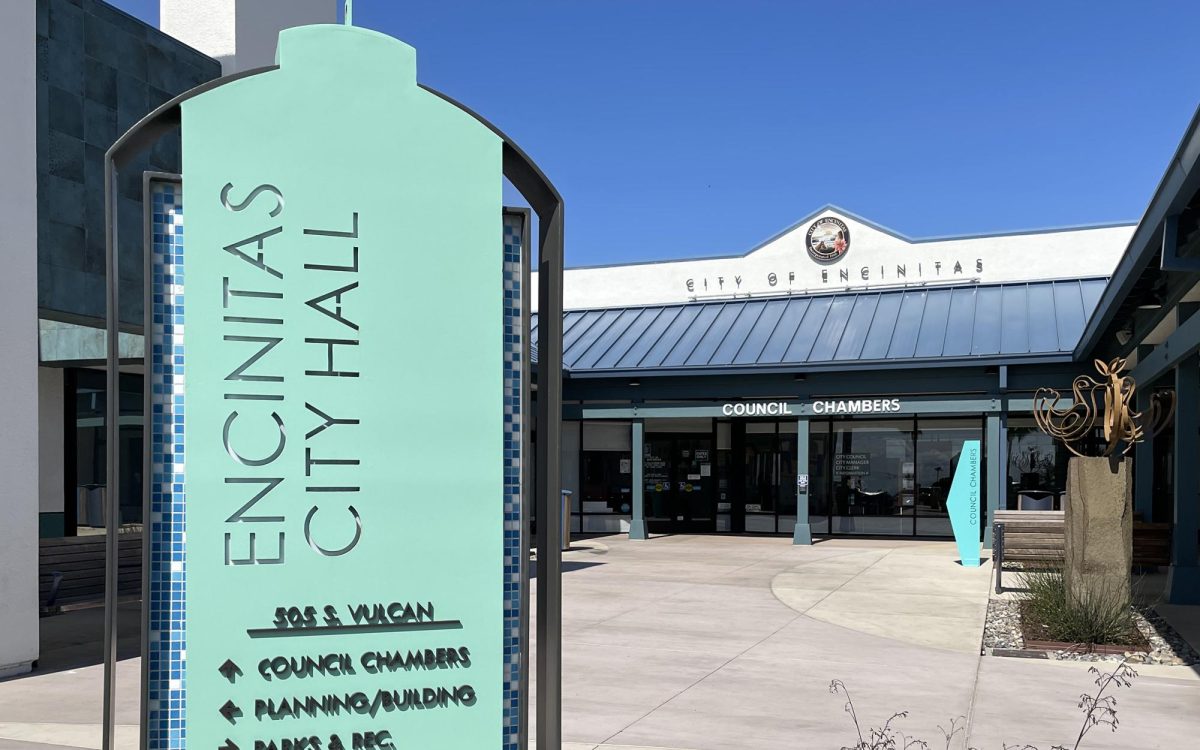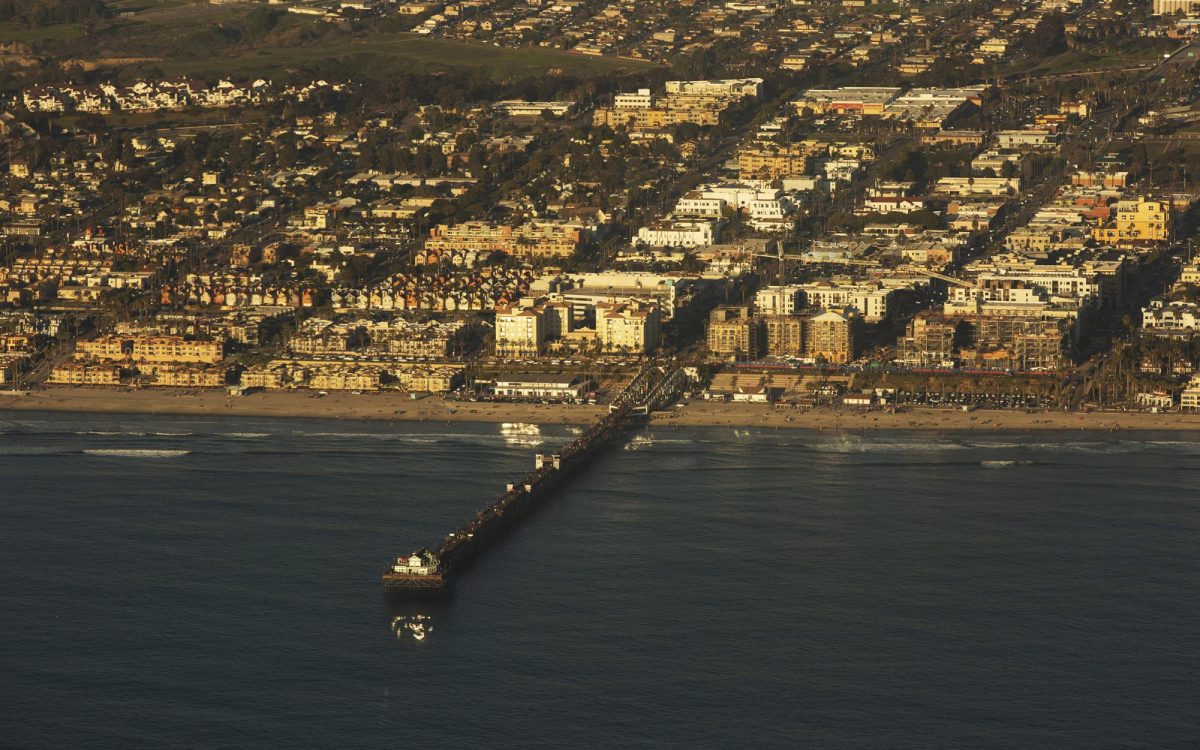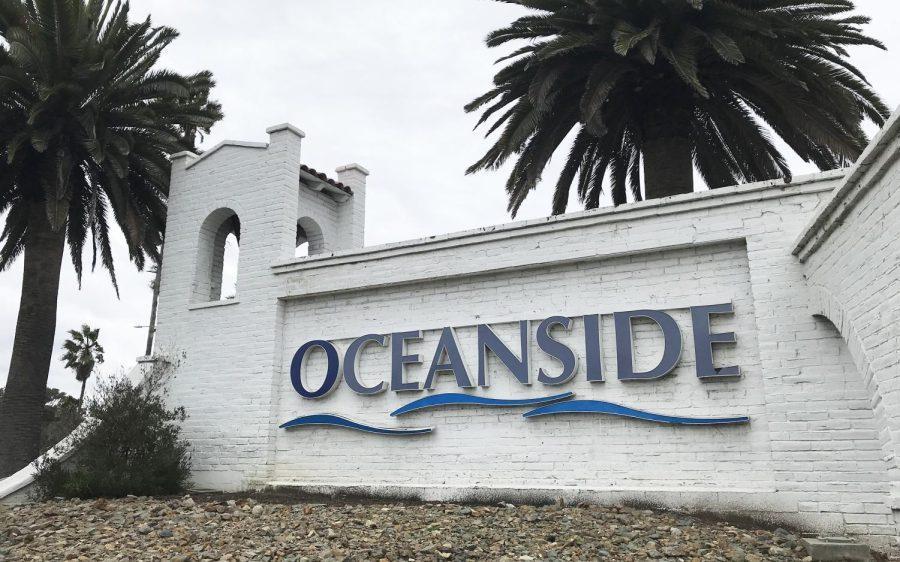Encinitas Mayor Tony Kranz and Deputy Mayor Joy Lyndes recently shared their perspectives and insights with the North Coast Current on key topics addressed during November City Council meetings.
They discussed their viewpoints on five of the most crucial conversations of the month, ranging from infrastructure and housing, including the declaration of Quail Gardens Drive surplus property, to speed limit reductions and the ongoing Pacific View Art Center project.
Infrastructure prioritization
Kranz and Lyndes agreed that the Special Joint City Council Infrastructure Task Force Meeting held on Nov. 15 stood out as the most crucial conversation last month.
The task force has been working with the council for about 10 months to identify project backlogs within the city. During the meeting, the task force presented findings regarding the approach to examine the various types of projects that need funding throughout the city and to assess how to prioritize those needs.
Having a disciplined process for assessing infrastructure values is something that the city has never done before.
According to Lyndes, Encinitas, still being a relatively new and small city, struggles with limited tax revenue. Emphasizing the ongoing struggle with inadequate funds for construction projects, Lyndes said she remains hopeful that this approach will contribute significantly to addressing the issue.
 Kranz noted the scope of the work that needs to be done.
Kranz noted the scope of the work that needs to be done.
“They’ve calculated almost $1 billion, so it’s a pretty significant list of things that are going undone,” Kranz said. “We’re going to have the challenge of figuring out how to start chipping away at that list. We have been doing that, but we’re clearly not keeping up, so we’ll need to come up with some strategies for ways to do more.”
Lyndes verified the forthcoming plan, expressing the expectation that in the coming months the task force will consider the council’s input along with public feedback as they complete their task of finalizing the prioritization of infrastructure development. Subsequently, the task force will provide suggestions on future funding.
Affordable housing
Lyndes expressed her passion for addressing the issue of affordable housing within the community. She emphasized the city’s struggles with decreasing affordability over time, attributing it to the nationwide trend of rising property values, especially evident in Southern California.
The deputy mayor underscored the importance of housing for the next generation and longtime residents, saying that without affordable options, the community risks losing its people, including young professionals and seniors.
“It is my firm belief that we do not want to lose our people out of our community,” she said. “The more diverse we can be as a community — and that includes income level and resources and ability to afford living — then the better we are.”
Lyndes acknowledged that while private developers contribute to housing at market rates, the city’s efforts to mandate affordable housing are relatively limited. She expressed her desire for the city to step in and provide opportunities for 100% affordable housing, particularly focusing on workforce housing and the community’s specific needs.
The city identified surplus land on Quail Gardens Drive as the best opportunity for creating 100% affordable housing, Lyndes shared. The declaration of the city-owned site was discussed at the meeting on Nov. 8, as there is a state requirement to define land that the city owns as surplus land so that it could be used as affordable housing.
The council was divided 3-2 in its surplus declaration decision, with Kranz and Councilman Bruce Ehlers the dissenting votes. At the Nov. 8 meeting, Kranz said he there was no reason to rush the process and that community input needed to be addressed.
“We had to bring it to our City Council and take the action to check the box of the state requirement to call it surplus land, so we did that and it created an opportunity for a lot of dialogue within the community,” Lyndes said. “We ended up passing it and it’s moving forward.”
Looking ahead, Lyndes said the importance of working with a consultant to define the specifics of the affordable housing project. This includes determining the number of units, open space, park areas and other elements crucial to the community’s well-being. She emphasized the city’s commitment to not only creating housing but also ensuring quality of life by providing public benefits for the community.
The next steps in this process will involve addressing the cost and seeking additional funding sources to bring the vision of affordable housing to fruition. Lyndes said she remains hopeful that the efforts will contribute positively to the community’s growth and diversity.
Pacific View Art Center
The city’s goal is to have the Pacific View Art Center operational by the middle of 2024, Kranz confirmed.
During the regular meeting held on Nov. 15, the city reviewed the results of a public survey and programming recommendations by the Commission for the Arts and Ad Hoc Committee for the Pacific View Cultural Art Center and provided city staff members with direction.
Mayor Kranz and Deputy Mayor Lyndes both acknowledged the significance of the discussion, highlighting the city’s commitment to community engagement through diverse communication tools and building relationships with stakeholders, as outlined in the City Council Agenda report.
Council members deliberated on determining the associated equipment costs. Kranz emphasized the city’s intention to provide necessary equipment for specific activities in designated classrooms.
For example, a photography studio might require studio lights, and a software class might need Adobe software and computers. The need for appropriate furniture throughout the rooms is also a necessity, Kranz said.
Kranz said that the staff will now compile a proposal outlining the requirements in the coming months.
Encinitas arts Commissioner Jennifer Marakovits expressed her enthusiasm for the ongoing conversation during the meeting.
“As we continue to grow in the arts, it enriches our society in Encinitas,” she said.
According to the report, results from the Pacific View Art Center Interests and Preferences Survey indicate the community’s strong interest in classes, workshops and camps at the new complex, located at the former Pacific View Elementary School site.
The program categories of highest public interest are visual arts, performing arts, fiber arts, music and broadcast, literary arts and botanical arts, according to the agenda report. The report further underscored a notable significant preference for drop-in studio opportunities in visual and fiber arts.
Creating safer streets
Efforts are underway in the city to address traffic concerns around housing element sites, focusing on ways to calm traffic that is expected from multifamily apartments. Additionally, this includes measures to enhance safety for pedestrians and bicyclists in neighborhoods where such improvements are lacking.
Kranz emphasized the importance of this initiative, discussed on Nov. 15, acknowledging the challenges created by the legal constraints that prevent the city from mandating developers to implement such improvements.
The council has put together a list of priority projects, limiting itself to five. City staff members are not yet assigned to undertake preliminary design work to estimate the costs associated with the improvements.
“My expectation is that the cost for the entire list is going to likely be more than the resources we have available, so then we will need to prioritize which projects will be built first,” Kranz said.
Reducing speed limits
Lyndes elaborated on her support for the ongoing conversation regarding a citywide reduction of speed limits.
Thanks to recent clarifications in state regulations, the city now has the opportunity to assess the viability of lowering speed limits on a majority of the streets, which is typically possible by reducing them by 5 mph, Lyndes explained.
Over the past several years, there has been a growing demand from community members to enhance street safety. It is a common issue for every city, and Encinitas is no different, the deputy mayor said.
“We really do believe that speed and the severity of an accident are tied,” Lyndes said.
Recognizing the diverse demands on the roadways, the city is working to accommodate various issues in the safest manner possible.
Kranz and Lyndes said they strongly believe that the reduction of speed will help reduce the severity of accidents and align with the objectives of Vision Zero, a nonprofit project to eliminate traffic fatalities and serious injuries.
Exploring ways to implement speed limit reductions on the majority of community streets, the city aims to prioritize safety.
While acknowledging that change can be challenging, Lyndes emphasized the positive response from the public.
She expressed her appreciation for the public comment process, noting that it provides a range of perspectives and ideas that the council may not have considered.
For additional information on these topics and others, visit the city’s website.
Alysse Dodge is a local freelance writer.





